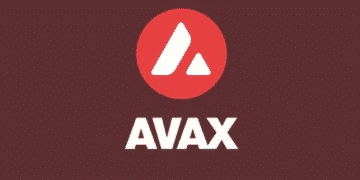DragonChain is a blockchain-based company and ecosystem originally developed by Disney in 2014. The project started as the “Disney Private Blockchain Platform” and was later released as open-source software in 2016.
DragonChain currently operates as a nonprofit but will launch as a commercial enterprise (DragonChain Inc.) once the platform is fully rolled out.
What Does DragonChain Do?
In general terms, the purpose of DragonChain is to help companies quickly and easily incorporate blockchain into their business applications. Many companies might be interested in making this transition because of the benefits associated with serving clients over a blockchain – increased efficiency and security for transactions, a reduction of costs from eliminating potential fraud and scams, etc.
More specifically, DragonChain is providing the serverless ecosystem that allows companies to start using blockchain applications in an easy, private, and secure way. They aim to give businesses a “turn-key” product that is compatible with the development stack that companies are currently used to like Java, C++, and Python. This means that businesses will now be able to build their own smart contracts (on the DragonChain platform) using common programming languages.
To look at a complete list of attributes for the DragonChain ecosystem, we’ll reference the DRGN whitepaper:
- Serverless system and smart contracts
- Established language support for smart contracts (Java, Python, Node, C#, Go, etc.)
- Scalable – Amazon AWS and Google deployments
- Secure – Protection of business data and operations
- Advanced currency implementations
- Smart contract libraries
- Currency Agnostic
These key properties, discussed in more detail later, are what make up the environment for businesses to easily run their decentralized applications on. The properties work in combination to deliver lower development costs, faster speed to market for company projects, higher scalability for those projects, and significantly heightened levels of security.
How Does DragonChain work?
The DRGN ecosystem consists of three key components:
1) The DragonChain Platform
The Platform can be thought of as the backend aspect of DragonChain that stores and secures business-client data. This is where developers can create and store Smart Contracts in common programming languages. Also included in the platform is access to Amazon Web Services (a subsidiary of Amazon.com that provides on-demand cloud computing platforms).
(adsbygoogle = window.adsbygoogle || []).push({});
2) The DragonChain Crowd-Scaled Incubator
The Crowd-Scaled Incubator is where companies will be able to easily develop their blockchain projects by following DragonChain’s standardized process.
The “crowd-scaled” aspect of the incubator is meant to be of major benefit to company projects. This means that, after a business develops their blockchain project in the incubator, they can have it reviewed and scaled by a crowd consisting of people/investors from all over the world. If successful, the incubation process works to drastically reduce the resources needed for a client to get exposure on a developing project.
In terms of outcomes, the crowd-scaled incubator aims to allow business projects to launch and start producing market value much quicker. On DragonChain’s website, you can see that they’re currently taking applications from businesses looking to start their commercial platform and incubation process.
DragonChain currently has 5 projects under incubation: Look Lateral – Liquid Art, Seed2You, LifeID, IDPay, and ClevX.
More information on each of these projects is available in the DragonChain whitepaper.
3) The DragonChain Marketplace
Lastly, the DragonChain Marketplace is a support system for client companies. Here they can access a pool of verified Subject Matter Experts on topics like crypto, marketing, and software development. The Marketplace is also where DragonChain clients access the library of pre-developed smart contracts.
Together, these 3 components (the platform, the incubator, and the marketplace) make up the DragonChain ecosystem. The ecosystem is fueled by the Dragon Coin (DRGN), a token that is micro-licensed to serve as credit for each of the service components.
What sets DragonChain apart?
Chiefly, DragonChain aims to resolve the issue of existing platforms restricting the creation of truly secure and scalable blockchain applications in real-world business use cases.
Ethereum, for example, provides customers with an ecosystem that runs Dapps and Smart Contracts. DragonChain serves a similar purpose but is designed to be more secure than the Bitcoin and Ethereum protocols.
DragonChain’s whitepaper makes a point to emphasize the level of security proposed by their blockchain. Included in the DRGN platform is a system of five standardized levels of consensus. Security increases as the verification level for a block increases. These five levels are:
- Business (Approval) Verification
- Enterprise (Validation) Verification
- Network Diversity Verification
- External Partner (Notary) Verification
- Public Checkpoint Verification
This form of layered security works to add another dimension to the common blockchain model. DragonChain suggests thinking about their levels of consensus model as a “blockchain of blockchains.”
Which Industries Does DragonChain target?
Since the blockchain aims to replace traditional contracts and payment systems with a more secure process, industries that currently suffer from fraud/scams have high potential to benefit. This means that companies dealing in real estate or law, for instance, could remove significant losses to fraud through Smart Contracts within DragonChain’s ecosystem.
(adsbygoogle = window.adsbygoogle || []).push({});
Another potential use case is found in the gaming industry. FlowPlay, a gaming company with over 75 million users, wants to use DragonChain tokens to allow gamers to safely purchase virtual items. This will effectively create the first non-trust based marketplace for virtual goods, guaranteeing legitimacy.
A few more intuitive use cases of the platform include auditing, booking/reservations, and voting systems. To see a full list, reference this page made available by Disney.
Who’s on the DragonChain Team?
The DragonChain team is composed of eight members with Joe Roets as the CEO and Chief Architect. He formerly worked for Disney before leaving to commit full-time to the development of the DRGN platform. Joe Roets is also noted for his involvement in projects at Coinbase and Overstock.
The rest of the team consists of four core developers and three business/marketing professionals. More information on each member and their involvement is available on the DragonChain website.
Additionally, the team has a strong advisor board behind them. Jeff Garzik is likely their most experienced advisor in terms of blockchain technology. He serves as an established icon in the Bitcoin network and founded the blockchain company, Bloq. Another significant advisor is Ed Fries; VP of game publishing at Microsoft and Co-Founder of Xbox.
Token Distribution
Total Supply: 433,494,437 DRGN
Circulating Supply: 238,421,940 DRGN
The DRGN coin was offered on October 2nd, 2017 at .0663 USD at the ICO and surpassed $4 by January of 2018.
Public tokens make up 55% of the total tokens with the remaining 45% distributed accordingly:
Dragon Slumber Score
DragonChain offers benefits for those that hold their coin in the form of a Dragon Slumber Score. The more DRGN coins you own and the longer you hold them, the higher your Slumber Score will be.
A higher Slumber Score rewards you with a greater extent of the following benefits:
- Everyone: bonuses for company ICOs in the future
- Business Owners: discounts on smart contracts available in the DragonChain marketplace as well as other forms of tech that DragonChain plans to offer in the future
Where Can I Buy DragonChain?
DRGN is not mineable, but you can purchase it on the following exchanges:
- KuCoin
- CoinExchange
- Gate.io
- Tidex
- Bancor Network
- Token Store
A lot of the exchanges on this list are rather uncommon, leaving room for potential price jumps if DRGN gets adopted by larger exchanges like Binance. Of the exchanges on this list, KuCoin has the highest trading volume for DRGN by a large margin. Using KuCoin in this case then will allow your DRGN trades to be processed and fulfilled much quicker.
Where to Store DragonChain?
DRGN is an ERC-20 token so there are several options for where to store it, namely in an ERC-20-compatible wallet. If storing your tokens in an online ERC-20 wallet, DragonChain recommends using MyEtherWallet or “MEW”.
(adsbygoogle = window.adsbygoogle || []).push({});
If you’re looking for a more secure and offline method to store DRGN coins, you should look into using a hardware wallet like Trezor or the Ledger Nano S. Both wallets support all ERC-20 tokens including DRGN.
Final Thoughts
DragonChain’s platform is establishing a niche in the crypto world with its layered security feature. The 5-layer security model adds great credibility to their overall goal of facilitating business integration into the blockchain.
Additionally, DragonChain is seen as a strong rival to Ethereum because of the platform’s ability to scale; an issue that Ethereum has been notorious for. From a financial standpoint, if DragonChain is to rival Ethereum, then there is plenty of room for growth in the DRGN Market Cap. Ethereum’s market cap is currently over 120 times that of DragonChain’s.
As of January 2018, the DragonChain team is raising funds and finishing development of the platform. Although the exact date is currently unannounced, the DRGN platform is expected to fully launch sometime this year.
DC Forecasts is a leader in many crypto news categories, striving for the highest journalistic standards and abiding by a strict set of editorial policies. If you are interested to offer your expertise or contribute to our news website, feel free to contact us at [email protected]































Discussion about this post